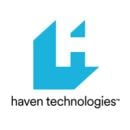“The best-laid plans of mice and men often go awry."
Product managers know the sentiment of this proverb all too well. Often, clunky execution is a people problem rather than a strategic one, and poor communication can devolve even the most ironclad plans into chaos. That’s why Built In NYC touched base with local product managers for practical advice to help keep teams in sync, even when things don’t go according to plan.
“Communication and transparency are key to creating a collaborative work environment and maintaining alignment across all stakeholders,” said Celonis Vice President of Product Management Jan Philipp Thomsen. “Product and engineering teams communicate regularly with each other through daily stand-ups, sprint planning, review and backlog grooming sessions.”
Celonis is a process mining and execution management technology company focused on maximizing clients’ business performance. The company is turning heads as a decacorn, and the team has to lead by example in its approach to internal processes.
At online insurance provider Haven Technologies, Product Owner Meghan Furdyna communicates often and stays realistic about the production schedule. “If my timeline slips due to scope creep or competing priorities, I over-communicate early and conservatively estimate the extra time needed so as not to underdeliver,” said Furdyna.
Furdyna emphasized the importance of two-way communication to avoid any surprises on the development team and to ensure they have the opportunity to be true partners in the creation of the roadmap.
Read on for more insight into creating and maintaining alignment throughout the product development cycle.
When developing a product roadmap, what steps do you take to ensure there’s alignment across teams from the get-go?
We must know why we are doing what we are doing. The starting point for that is the company’s vision. From there, product and engineering teams jointly work on the product vision and make sure to get input from teams across the entire organization. Next, we develop a strategy to achieve that vision by breaking it down into key methods and innovations that shape the product roadmap.
When developing the roadmap, it is important not to jump directly to the solution, but to obsess about the problem first. We need to understand who the customer is and what their needs are. Then we think about Celonis’ value proposition and how we are in a unique position to serve those needs. From there we derive key requirements before we create designs to validate our approach with customers. Finally, we quantify both customer value and development effort together with engineering to prioritize those innovations with the highest return on investment.
By the time we start building a product or feature, everyone has a clear understanding of how it fits into the company and product strategy, it has received extensive validation from customers, and we are taking development effort into account.
How do you maintain alignment throughout the development cycle?
We have platform teams as well as solution teams building applications on top of the platform for different verticals. This requires collaboration across several teams.
We present updates and demos to all stakeholders regularly, for example during product and engineering or company all-hands meetings.
In addition, we track our objectives and key results, roadmap initiatives, and all individual tickets mapped to those initiatives in JIRA and make that available to all teams at all times — both on an individual product level as well as in a consolidated view.
When developing the roadmap, it is important not to jump directly to the solution, but to obsess about the problem first.”
As project needs change, how do you reprioritize the product roadmap and keep teams aligned?
We use quantitative and qualitative approaches to validate our hypotheses and generate insights about whether our products create value for customers. Qualitative techniques include interviews with customers, in which we aim to understand detailed feedback from end users. To derive quantitative insights, product analytics plays an important role. For example, we analyze how many customers use certain parts of the product or how new features impact usage.
Once we have collected conclusive feedback and data points, we will discuss the need to reprioritize our product roadmap and potentially make adjustments. This could be a UX tweak or an actual pivot in product strategy. If we are talking about a pivot, all stakeholders need to understand the reasoning and data behind it.
Once we have changed, we need to continue collecting feedback in additional waves of testing and sharing results with relevant stakeholders. We would expect to see improvements, such as fewer negative or more positive comments by end users, or also an increase in the usage tracked with the help of our analytics. This type of feedback will help validate the new direction.
When developing a product roadmap, what steps do you take to ensure there’s alignment across teams from the get-go?
I look at our product roadmaps from a yearly and quarterly perspective. For yearly planning, I work directly with my manager to understand the company’s annual goals and how our work supports achieving those goals. At the start of the year, I will work with my team to outline a six-month roadmap. As we are prioritizing the team roadmap, I’ll coordinate directly with my stakeholders to ensure that our priorities align. Since we are building an internal software platform with complex features, I need to consciously be a few steps ahead of new business implementation.
Quarterly planning is then a refinement of the longer-term roadmap. During the last month of the existing quarter, I start to have more detailed conversations with my stakeholders about what’s ahead. We outline dependencies and begin any conversations needed for gathering feedback on the build of upcoming feature work.
As we are prioritizing the team roadmap, I’ll coordinate directly with my stakeholders to ensure that our priorities align.”
How do you maintain alignment throughout the development cycle?
We’ve recently implemented what we call a program increment (PI) planning cycle of fully grooming and mapping out three sprints of development work. Our program increments line up with my new business team’s PI, which pushes us to identify our dependencies at a more refined level and raise concerns with scope among our platform team and stakeholders.
A long-term project I’m working on with the new business team is adding an advisor-driven deferred income annuity product to our administrative platform. Each quarter, I work with a new business counterpart to outline our goals. During the PI cycle, we meet as a product team to define where we’ll need to collaborate and what we want to achieve in the next three sprints. To prepare for the next cycle, our development teams meet to outline development dependencies or clarifications needed before kicking off our tasks. If reprioritization of feature delivery is an option, I offer that as a solution.
Speaking of which, how do you reprioritize the product roadmap and keep teams aligned?
If possible, I try not to reprioritize within the PI unless something critical comes up. If something critical does emerge, my first step is to connect with our platform team to determine if the request is something that we can handle. If it does fall on my team, I like to work with my tech lead to fully understand the details of the request, and whether it’s realistic to deliver within the desired time frame. If there is a push from our new business partners to prioritize this new piece of work over what was previously agreed upon, but the timing is not possible, I’ll reconvene with the new business team and ask them to reassess their list and ask where we can deprioritize other items.









